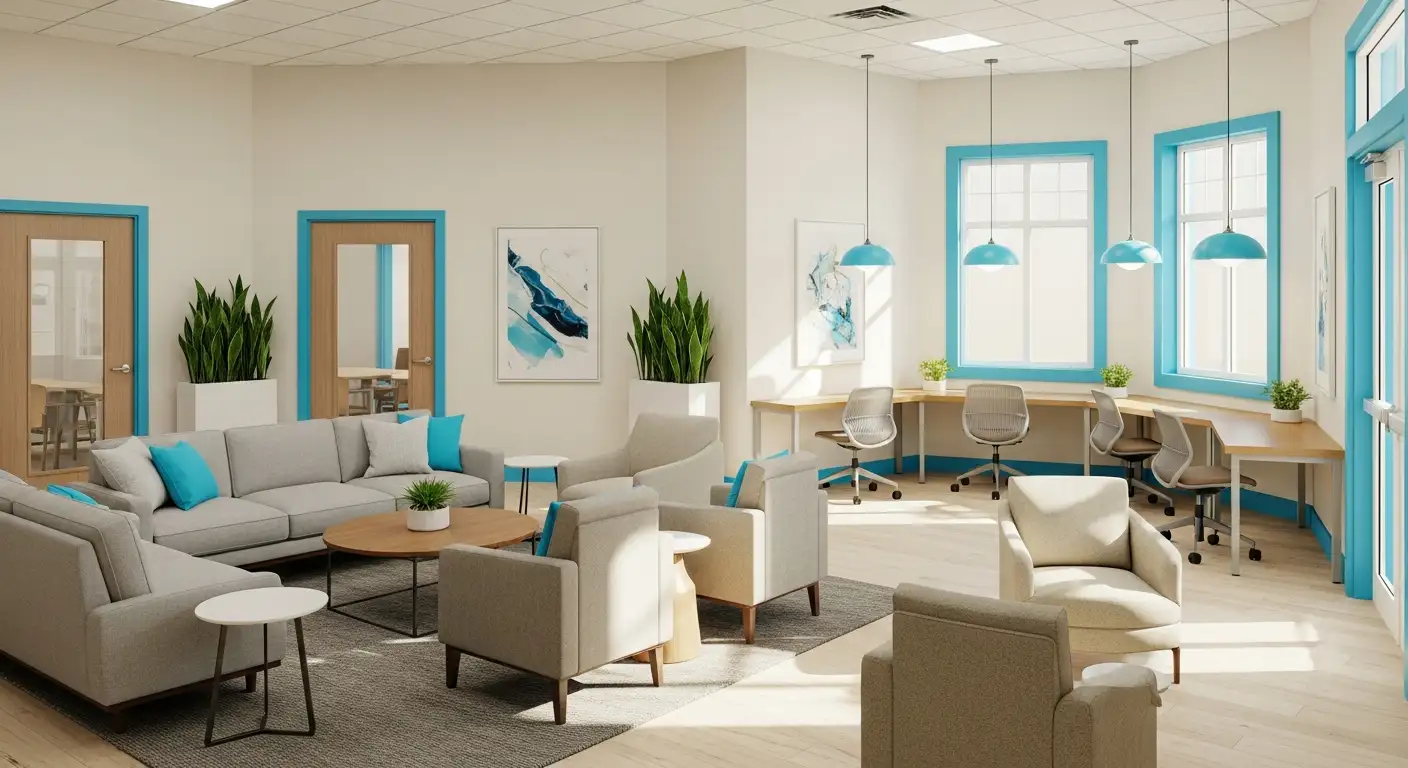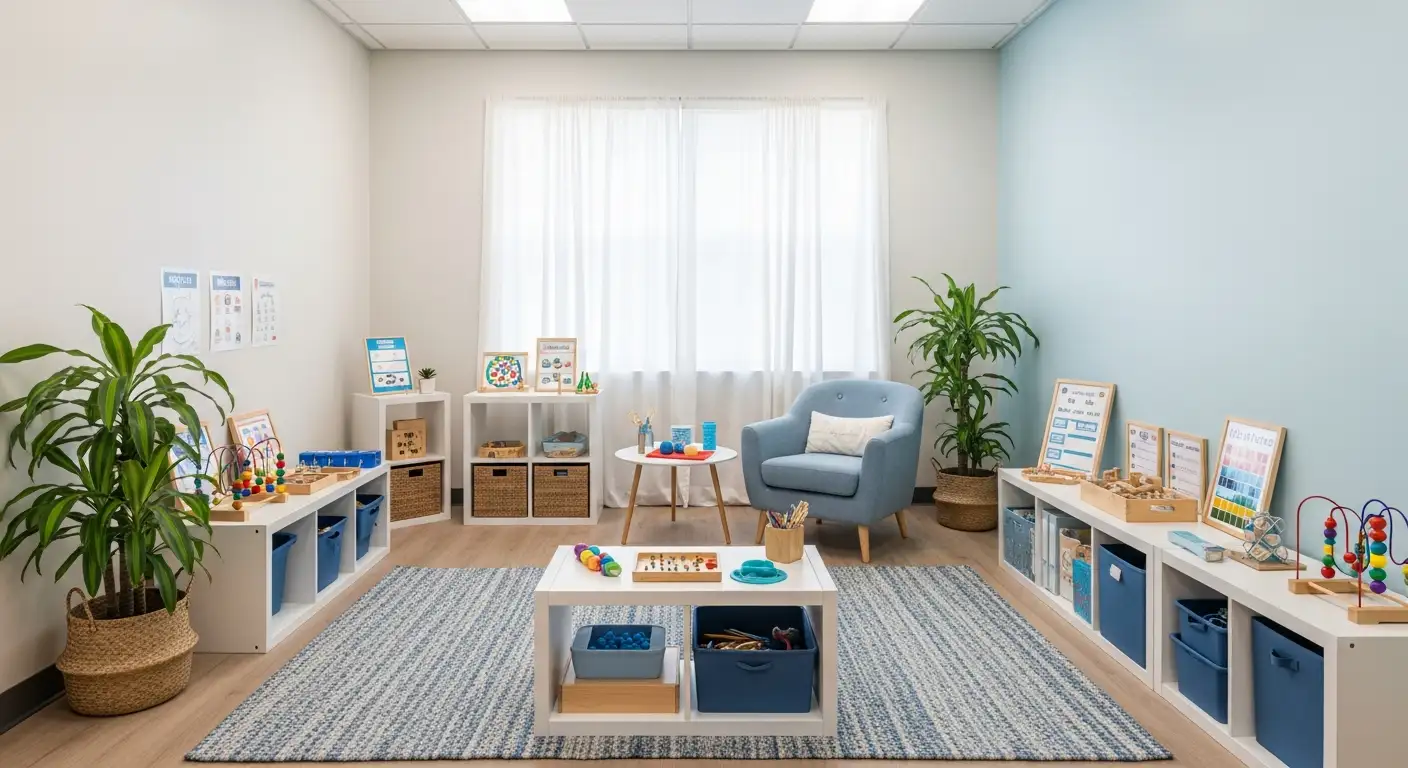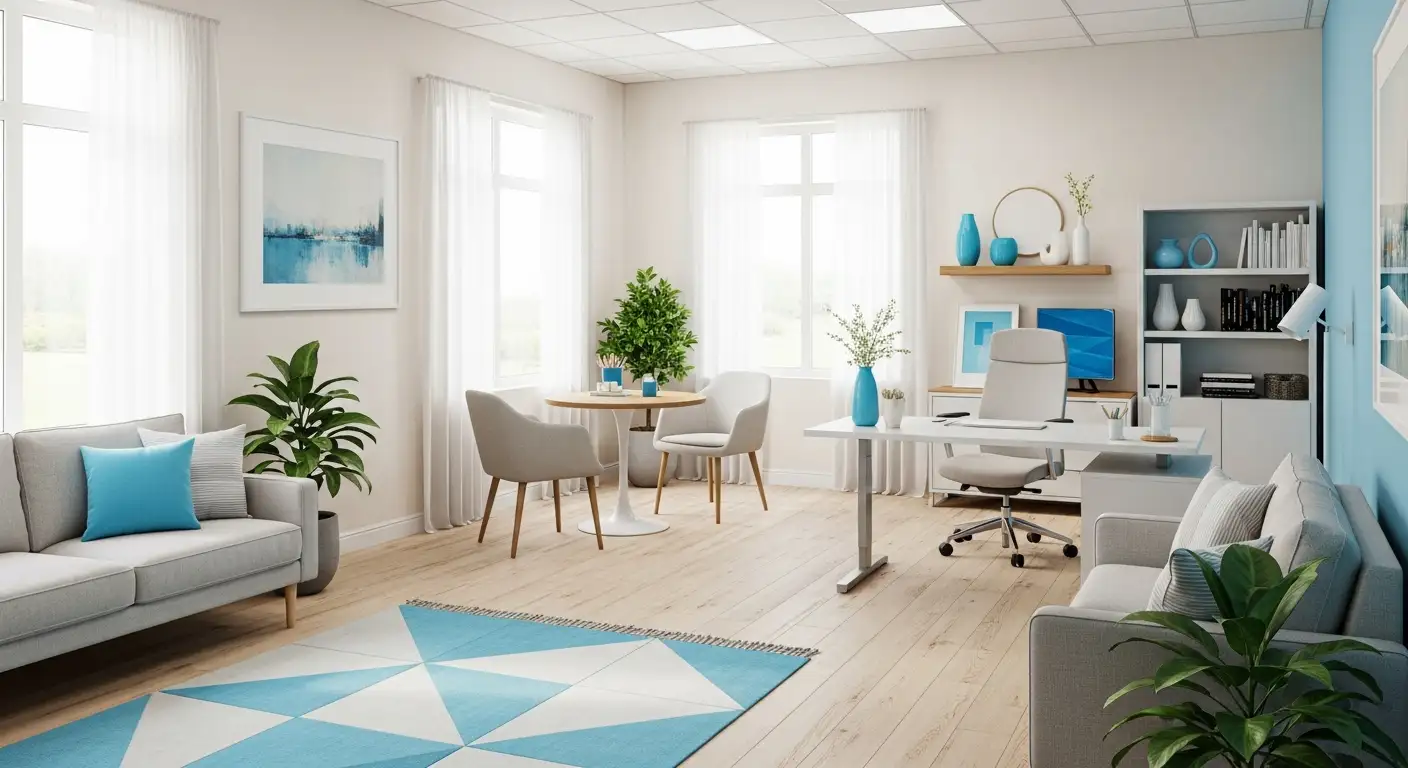Unlocking the Power of Visual Tools in ABA Therapy
In the realm of ABA therapy, visual supports have emerged as indispensable tools that significantly enhance learning, communication, and independence for children with autism. Harnessing the strength of visual cues, these supports create a structured environment tailored to individual needs, facilitating smoother transitions, clearer understanding, and more active participation. This comprehensive overview explores the various types, benefits, strategies, and research backing the use of visual supports in ABA therapy, emphasizing their role as evidence-based practices that transform the educational and developmental landscape for children on the spectrum.
Understanding Visual Supports in ABA Therapy

What are visual supports in ABA therapy?
Visual supports are practical tools that help children with autism comprehend routines, expectations, and instructions by using visual cues. These cues can include pictures, schedules, objects, written words, charts, or symbols. The goal of these supports is to make information more accessible, especially for children who process visual information better than auditory input.
Categories and examples of visual supports
Visual supports can be grouped into different types, each serving a specific purpose. These include:
- Visual schedules: Depict daily routines and activities in a sequence, helping children understand what to expect. For example, picture boards showing morning routines or school activities.
- Social stories: Brief narratives with pictures that teach social skills and proper behavior in various situations.
- Choice boards: Visual tools allowing children to select preferred activities or items, enabling independence and reducing frustration.
- Behavior cue cards: Visual signals that remind children of rules or expected behaviors, such as 'please wait' or 'quiet'.
- Token boards: Visual systems where children earn tokens for positive behaviors, which can be exchanged for rewards.
- Visual timers: Clocks or countdown visuals that help children understand the passage of time and transition between tasks.
Examples include symbols for requesting items, visual reminders for routines, and 'do not disturb' signs. These supports are often created with digital tools like Boardmaker or SymWriter, or customized at home using printed images.
Goals and benefits of using visual supports
The primary aim of visual supports is to enhance understanding and communication for children with autism. They help in reducing anxiety associated with changes or unfamiliar routines and promote independence by enabling children to follow routines with less adult assistance.
Research shows that implementing visual supports leads to significant improvements in social skills, communication, and behavior management. For example, a study using visual schedules and transition visuals in ABA therapy observed a notable decrease in the time taken for children to move from one activity to another.
Additionally, visual supports contribute to skill generalization across different settings—such as home, school, and community—and foster better social understanding.
| Type of Visual Support | Purpose | Typical Use | Example Activities |
|---|---|---|---|
| Visual schedules | Structure routines | Daily and weekly planning | Morning routine, classroom schedule |
| Social stories | Teach social skills | Teaching social cues | Greeting others, sharing |
| Choice boards | Encourage independence | Selecting activities | Choosing snacks or activities |
| Behavior cue cards | Manage behavior | Prompting appropriate actions | 'Stop', 'Wait', 'Come here' |
| Token boards | Reinforce positive behavior | Behavior reinforcement | Earning tokens for good behavior |
| Visual timers | Aid in time management | Transitions and deadlines | Timer for free time or cleanup |
Personalizing and implementing visual supports
Creating effective visual supports involves understanding each child's individual needs, interests, and developmental level. Caregivers and educators are encouraged to involve children in designing visuals, which increases engagement and ownership.
Visual supports should be placed in visible, accessible areas and updated regularly to reflect changes in routines or goals. Consistent use and positive reinforcement are vital for maximizing their effectiveness.
In summary, visual supports are indispensable tools in ABA therapy. They make routines clearer, teach new skills, and empower children with autism to communicate and participate more fully in everyday activities.
The Benefits of Visual Supports for Children on the Spectrum
How do visual supports benefit children with autism in ABA therapy?
Visual supports play a vital role in ABA therapy for children with autism by improving their ability to understand routines, expectations, and social cues. These tools, which include visual schedules, choice boards, emotion thermometers, and behavior cue cards, provide concrete visual cues that help children grasp their environment and daily activities more clearly.
Using visual supports reduces anxiety by offering predictability and structure, making transitions between activities smoother. For example, visual schedules break down routines into manageable steps, helping children anticipate what comes next and encouraging independence. Choice boards empower children to express preferences without verbal communication, fostering autonomy and reducing frustration.
In addition, visual aids support children in understanding social interactions and cues, leading to better social skills. Visual tools also assist in teaching new concepts, managing behaviors, and building routine-based independence. The visual approach not only enhances comprehension but also encourages active participation, making learning engaging and less overwhelming.
Overall, integrating visual supports within ABA therapy creates a more predictable, supportive environment. It helps children process information more efficiently, develop essential skills, and build confidence—contributing to improved behavioral outcomes and a better quality of life.
Types of Visual Supports Used in ABA Therapy

What types of visual supports are commonly used in ABA therapy?
In ABA therapy, various visual supports are employed to help children with autism understand routines, social cues, and expectations more effectively. One of the most common tools is the picture schedule, which visually outlines daily activities, helping children anticipate what comes next and reducing anxiety.
Social stories are brief narratives paired with pictures that teach social skills and appropriate behaviors in specific situations. These stories can be personalized to address individual challenges and scenarios.
Communication boards and systems like PECS (Picture Exchange Communication System) allow non-verbal children to request items or express thoughts using pictures or symbols. This enhances their ability to communicate needs without relying on speech.
Visual timers facilitate understanding of time, helping children transition smoothly between activities. First-Then boards visually show what task needs to be completed first and what follows, aiding in task compliance.
Emotion cards or emotion thermometers portray different feelings, helping children recognize, understand, and manage their emotions.
Choice boards and token systems give children options to make choices and earn rewards, promoting independence and positive behavior. Visual prompts, like cue cards or symbols, support following instructions and maintaining focus.
These supports are adaptable, often created with tools like Boardmaker or using digital apps on tablets, allowing for customization based on each child's needs. Implementing these supports consistently across settings like home and school helps promote understanding, reduce frustration, and foster skill development.
Strategies for Effective Implementation of Visual Supports

What strategies are effective for implementing visual supports in ABA therapy?
Implementing visual supports successfully in ABA therapy requires a well-planned approach that starts with thorough assessment and individualization. Initial evaluations, such as functional behavior assessments and skill assessments, help identify the specific needs of each child. This information guides the selection of appropriate visual aids, whether they be schedules, choice boards, or timers, tailored to the child's cognitive level and interests.
Once supports are chosen, introducing them gradually is crucial. This involves modeling the use of visual supports, providing clear explanations, and offering guided practice to help children understand how to use these tools effectively. Consistent reinforcement and positive feedback encourage children to engage with the supports independently.
Collaboration among therapists, teachers, and parents is essential to create a consistent environment where visual supports are integrated across different settings. Consistency helps children understand routines and expectations, reducing anxiety and increasing engagement.
To promote independence, supports should be faded gradually as the child becomes more comfortable and skilled in using them. This might mean reducing prompts or transitioning responsibility so that the child can perform tasks with less adult assistance.
Ongoing data collection and progress monitoring are vital to assess the effectiveness of the supports. By regularly reviewing the child's responses and adapting the visual aids accordingly, practitioners can ensure that the supports remain relevant and effective.
Finally, customizing visual supports by considering the child's developmental level, preferences, and environmental context enhances their utility. Visual supports designed with the child's unique needs in mind foster better understanding, reduce stress, and support the acquisition of functional skills across classroom, home, and community settings.
| Step | Description | Purpose |
|---|---|---|
| Assessment and goal setting | Evaluate needs and set clear objectives | Personalize supports |
| Gradual introduction | Model and practice use of supports | Build understanding and comfort |
| Consistency and collaboration | Use supports across all environments with team input | Ensure seamless integration |
| Data collection | Monitor progress and modify supports | Improve effectiveness |
| Fading and independence | Reduce reliance on external supports over time | Promote self-sufficiency |
In summary, effective strategies involve careful planning, gradual implementation, teamwork, and ongoing assessment, all tailored to support the child's development and independence.
Promoting Learning and Independence Through Visual Supports

How do visual supports promote learning and independence in children with autism?
Visual supports are essential tools that help children with autism understand their environment and communicate their needs more effectively. They include various formats such as visual aids, picture exchange systems (PECS), visual schedules, and social stories.
By providing visual representations of routines, tasks, and social cues, these supports make abstract concepts more concrete, which children with autism often find easier to process. For example, visual schedules break down the day into manageable steps, showing pictures or symbols for each activity. This approach helps children anticipate what will happen next, reducing anxiety and promoting independence in managing daily routines like dressing, brushing teeth, or using the bathroom.
Consistent use of visual supports enhances understanding and language development. When children recognize symbols or pictures, they begin to associate them with specific actions or objects, facilitating vocabulary growth and comprehension. Visual cues also enable children to express their preferences or needs through choice boards or communication cards, decreasing frustration caused by communication difficulties.
Research shows that visual supports significantly increase engagement and social participation. They assist children in following instructions, improving their ability to participate in classroom activities and social interactions. Moreover, visual aids support self-care routines, empowering children to perform tasks with less adult assistance.
In summary, visual supports foster crucial skills for independence by offering structure, clarity, and opportunities for children to practice routines and social skills confidently. Their use leads to more meaningful participation, better understanding, and overall growth for children with autism spectrum disorder.
Applying Visual Supports to Communication and Development

How are visual supports applied to communication and development in children with autism?
Visual supports play a vital role in enhancing both communication skills and overall development for children with autism. Since many children on the spectrum process visual information more effectively than auditory input, these tools align naturally with their learning strengths.
One of the primary applications of visual supports is in creating structured routines and social understanding. Visual aids such as picture schedules, choice boards, and visual cues help children grasp daily activities, routines, and social cues clearly. For example, visual schedules break the day into familiar steps, reducing anxiety and promoting confidence in managing transitions.
In addition, visual supports facilitate language development and expression. Tools like PECS (Picture Exchange Communication System), communication boards, and visual timers enable non-verbal or minimally verbal children to communicate needs, desires, and thoughts non-verbally. These visuals serve as an alternative language foundation, and with consistent use, often help children develop spoken language over time.
Children are also empowered to make choices through visual aids like choice boards, which depict options using pictures or symbols. This process fosters autonomy, increases motivation, and lessens frustration. Emotional understanding is supported with charts that help children recognize and label feelings, contributing to emotional regulation.
Creating supportive environments involves integrating these visual tools into daily settings at home, in school, and within therapy sessions. Visual cues on walls, tables, or digital devices provide constant, accessible prompts that reinforce learning, social cues, and expectations.
Overall, visual supports build a nurturing environment where children with autism can learn, socialize, and express themselves more effectively. By leveraging their natural visual strengths, these tools promote independence and positive developmental progress.
Research and Evidence-Based Practices on Visual Supports
What does research say about the effectiveness of visual supports in ABA therapy?
Studies consistently demonstrate that visual supports are a vital component of ABA therapy for children with autism spectrum disorder (ASD). They are recognized as an evidence-based intervention that significantly enhances understanding and communication.
Research shows that visual supports help children grasp routines, social cues, and behavioral expectations more quickly. This increased understanding fosters greater independence and active participation in daily activities. For example, many peer-reviewed investigations, including single-case reversal designs, reveal marked reductions in challenging behaviors such as escape-maintained behaviors when visual supports are used.
In various settings—homes, schools, and clinics—visual aids have been proven to improve social skills, cognitive functioning, and adaptive behaviors. Their effectiveness spans across different age groups, from preschoolers to adolescents, underscoring their broad utility.
The scientific literature emphasizes that for visual supports to have maximum impact, their implementation must be precise. Fidelity in their use, tailored to each child's needs, and ongoing monitoring are essential. This approach ensures the supports remain relevant and effective as the child's skills and routines develop.
Overall, integrating visual supports consistently and thoughtfully can lead to meaningful improvements in communication, routine comprehension, and behavior management, making them a cornerstone in ABA interventions for children with autism.
The Lasting Impact of Visual Supports
Integrating visual supports into ABA therapy not only facilitates immediate improvements in communication and behavior but also fosters the development of autonomous, socially engaged individuals. The evidence underscores their importance as a cornerstone of effective autism intervention strategies. By tailoring visual supports to each child's unique needs and ensuring consistent application, clinicians, educators, and families can create enriching environments that promote learning, reduce stress, and enhance overall quality of life. As research continues to evolve, the role of visual supports remains pivotal in advancing autism therapies, transforming challenges into opportunities for growth and success.
References
- Use Visual Supports To Aid Your Autistic Kid's Learning
- Creating Visual Supports for Autism in School Readiness Program
- The Use of Visual Supports to Facilitate Transitions of Students with ...
- How Do Visual Supports Help Autism to Thrive? - SkyCare ABA
- 7 Benefits of Visual Supports for Autism | ABA Centers of Florida
- Visual Supports: Maximizing Success for Children with Autism
- Visual Supports in ABA Therapy: 5 Key Tools Guide
- Inclusive ABA Practices: Using Visual Supports to Foster ...
- Visual Supports for Non-Verbal Children in ABA Therapy










